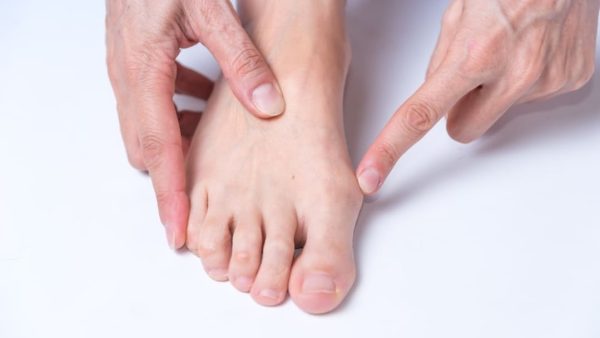Looking for Expert-Level VA Claim Answers?📱Call Us Now! 737-295-2226
Does your knee arthritis qualify you for VA disability compensation and benefits? Let’s dive in and find out.
Knee arthritis can be debilitating, significantly affecting mobility, quality of life, and the ability to perform everyday tasks. If that sounds familiar, you’ll want to keep reading.
In this post, we’ll cover key elements in securing a VA rating for knee arthritis, including:
- The VA disability rating process for knee arthritis
- How to service connect your condition
- How to file a VA disability claim
- VA secondary conditions to knee arthritis
Ready? Let’s go!
Table of Contents
Summary of Key Points
- VA disability ratings for knee arthritis range from 10% to 60%, depending on the severity, frequency, and duration of your symptoms.
- To receive VA disability compensation for knee arthritis, you must prove service connection, showing that your military service caused your knee condition.
- The VA considers several factors, including range of motion, limitation of flexion, and limitation of extension, when determining your knee arthritis VA rating.

Knee Arthritis in Veterans
Knee arthritis refers to the degeneration of cartilage in the knee joint, which can lead to pain, swelling, and difficulty with movement.
While osteoarthritis is the most common form, other types include post-traumatic arthritis and rheumatoid arthritis.
It’s common for veterans to develop knee pain and arthritis due to their military service, with some of these being the most common risk factors behind knee arthritis.
- Knee injuries
- Presence of bone spurs
- Stress
- Obesity
Remember, it’s essential to see your healthcare provider if you develop arthritis or experience additional knee problems.
VA Rating Process for Knee Arthritis
How the VA Rates Knee Arthritis
There are various ways the VA may rate your knee arthritis.
For example, if you have multi-joint arthritis in two or more joints (except post-traumatic and gout), you may be rated under diagnostic code (DC) 5002.
Generally, the VA rates arthritis at 10%, 20%, 40%, 60%, and 100%, depending on the severity of your condition and how it impacts your ability to function.
However, the VA rates knee pain under DC 5257, depending on factors like limitation of flexion and limitation of extension of the leg.
Diagnostic Codes for Knee Conditions
Knee arthritis is evaluated under several diagnostic codes, depending on the specific symptoms and the type of arthritis present.
The two most common diagnostic codes for knee arthritis are:
- Diagnostic Code 5003 – Degenerative Arthritis: This code covers arthritis that is confirmed by X-ray evidence of joint space narrowing, cartilage loss, or bone spurs. If eligible, you’ll receive a VA disability rating of 10% or 20%.
- Diagnostic Code 5010 – Post-Traumatic Arthritis: This diagnostic code is similar to Code 5003 but is specific to arthritis caused by an injury. It is rated the same as degenerative arthritis, depending on the limitation of motion.
Additionally, the VA may rate knee arthritis based on related conditions, like:
- Diagnostic Code 5256 – Ankylosis of the Knee: If you suffer from ankylosis of the knee, you may be eligible for a VA rating of 30%, 40%, 50%, or 60%, depending on the degree of flexion in your knee.
- Diagnostic Code 5257 – Knee Instability: If the knee has recurrent instability or dislocations, you may be eligible for a VA rating of 10%, 20%, or 30%, depending on the severity of the instability.
- Diagnostic Code 5260 – Limitation of Flexion of the Knee: Flexion is the ability to bend the knee. The VA assigns ratings based on how much the knee can be bent, with ratings ranging from 0% to 30%.
- Diagnostic Code 5261 – Limitation of Extension of the Knee: Extension is the ability to straighten the knee. You can receive ratings from 0% to 50% based on the degree of limited extension.
Note: If eligible, you will receive a temporary 100% VA disability for knee replacement for the first four months post-surgery and then will be re-evaluated.
VA Rating Criteria for Knee Arthritis
The VA assigns disability ratings based on the level of functional loss due to pain, stiffness, or limitation of motion.
To determine a rating for knee arthritis, the VA typically uses the following criteria:
Range of Motion (ROM)
One of the key factors in assigning a rating for knee arthritis is the range of motion (ROM) of the knee joint. The VA evaluates both flexion (bending the knee) and extension (straightening the knee). The more limited your ROM, the higher your VA disability rating likely will be.
Limitation of Flexion
| DC 5260 Leg, limitation of flexion of: | VA Rating |
| Flexion limited to 15° | 30% |
| Flexion limited to 30° | 20% |
| Flexion limited to 45° | 10% |
| Flexion limited to 60° | 0% |
Limitation of Extension
| DC 5261 Leg, limitation of extension of: | VA Rating |
| Extension limited to 45° | 50% |
| Extension limited to 30° | 40% |
| Extension limited to 20° | 30% |
| Extension limited to 15° | 20% |
| Extension limited to 10° | 10% |
| Extension limited to 5° | 0% |
Painful Motion
Even if you have a relatively normal range of motion, you may still receive a 10% rating if your knee exhibits painful motion during physical examination.
Proving Service Connection for Knee Arthritis
There are two main ways to prove service connection for knee arthritis: direct or secondary service connection.
Service connecting your condition helps prove to the VA that your military service caused or aggravated your knee condition.
Direct Service Connection
For a direct service connection, you need to show that your knee arthritis resulted from or was aggravated by your military service.
This requires these three key elements:
- A current medical diagnosis
- An in-service event, injury, aggravation, or illness
- A medical nexus (link) between the current diagnosis and the in-service event, injury, aggravation, or illness.
Secondary Service Connection
In some cases, knee arthritis may not be directly caused by your military service but may develop as a secondary condition.
For example, your service-connected ankle or hip injury may lead to knee arthritis because of altered gait or uneven weight distribution.
In this case, you can file for a secondary service connection, which awards you a VA disability rating for knee arthritis because of your initial service-connected injury.
VA Secondary Conditions to Knee Arthritis
Secondary conditions occur when a service-connected disability has caused or has aggravated a new or pre-existing condition, illness, or injury.
Examples of secondary conditions to knee arthritis include:
- Depression and Anxiety
When you claim a secondary condition, you may qualify for additional VA compensation!
Need a Nexus Letter for Your Knee Condition?
Trying to get a Nexus Letter to help service connect your primary or secondary knee condition?
WE CAN HELP!
Veterans who become members of the VA Claims Insider Elite program get access to a network of independent medical providers who can write Nexus Letters at reduced rates.
Why pay $1,500 to $2,000 for a Nexus Letter when you can get one for 60-70% OFF?
Click HERE to speak with an expert now (no risk, no obligation, no high pressure sales tactics).
Filing a VA Disability Claim
To receive disability benefits, you must file a VA claim. We recommend filing your claim online to speed up the VA disability claims process. However, the VA offers additional options for obtaining disability benefits.
You can file a VA claim one of the following ways:
- By Mail
- Via Fax
- In person at a VA regional office
If you don’t submit a VA claim online, you’ll need to download and complete VA Form 21-526EZ.
How to Maximize Your VA Rating for Knee Arthritis
While a higher VA rating is never guaranteed, there are things you can do to help support your claim, including obtaining the following:
- Medical records (both service and post-service) detailing your diagnosis and treatment.
- Lay statements from fellow service members, family, or friends who have a first-hand knowledge of the severity of your condition.
- A medical nexus letter from a healthcare provider explaining the connection between your knee arthritis and military service.
(FAQs) Frequently Asked Questions
How does the VA rate knee arthritis?
The VA rates knee arthritis under various diagnostic codes, depending on your condition. Your VA rating will depend on factors like range of motion, limitation of flexion, and limitation of extension of the leg.
What is the highest VA disability rating for arthritis in the knee?
The highest VA rating for arthritis in the knee is 60%; however, a 100% VA disability rating can be temporarily assigned if you’ve had knee replacement surgery.
Is there a VA rating for knee pain?
Yes! VA ratings for knee pain range from 10% to 60%, depending on factors like range of motion, instability, and pain.
Do I need a C&P exam for knee arthritis?
You may need a compensation & pension (C&P) exam where an examiner will likely perform motion tests to assess the range of motion in your knee.
What is the bilateral factor for knee arthritis?
If you have knee pain in both knees caused by arthritis, you may qualify for a higher VA disability rating. The VA bilateral factor offers additional compensation to disabled veterans with health conditions affecting both sides of their body.
Is there a VA disability rating for knee joint pain?
There is no specific VA disability rating for knee joint pain; however, you may qualify under a similar condition.
For example, if your knee joint pain affects how much you can bend your knee, you may qualify for a VA rating under diagnostic code 5260, limitation of the flexion of your leg.
Related Blogs
Understanding the VA Knee Rating Chart
5 Best Ways to Get a VA Rating for Arthritis
How the VA Determines Benefits for Arthritis

YOU SERVED. YOU DESERVE. We Got Your Six!
- VA Claims Insider is the #1 most trusted name in VA disability claims.
- Work directly with a VA claims coach who can help lead you to VA claim victory.
- 25,000+ disabled veterans served in our membership programs since 2016.
- 4.7/5.0 average rating out of 5,500+ total reviews; over 4,500 5-star reviews.

Kelly Olone
Kelly Olone is a military spouse who earned her degree in Psychology from Florida International University. After working in the non-profit sector for several years, she turned to her passion for writing. She aims to contribute to a better understanding of the valuable benefits that veterans deserve. As a mom, Kelly navigates the delicate balance between deadlines and bedtime stories with finesse.



